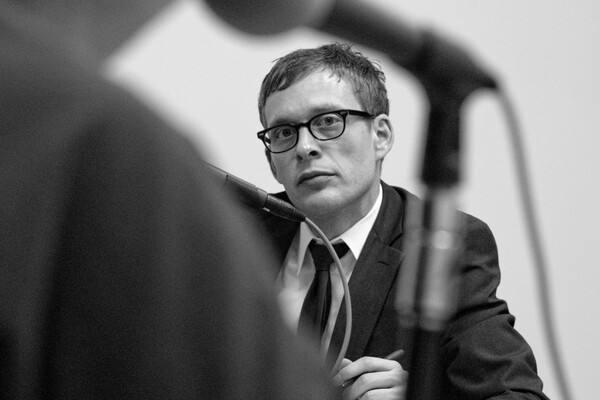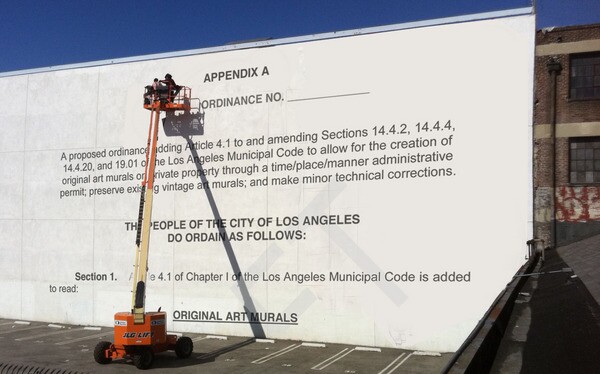Muralists, Street Artists Chime in on City's Proposed Mural Ordinance

Drafting Los Angeles' mural policies is not unlike scraping years of dried paint off a wall. Some bricks can now be seen at this stage of a process to form a new ordinance that would deliver a path for artists to paint on the walls of private property.
A public hearing held Tuesday at City Hall was unusual in its protocol. Run by the Planning Department, it opened with an abbreviated workshop led by City Planner Tanner Blackman that covered the proposed ordinance, which will refer to murals as fine art and not commercial signs.
The ordinance draft is designed for artists or property owners to obtain a permit through a simple process. It is designed to have minimal administrative support from a cash-strapped city unable to fund a new department.
At the hearing, mural stakeholders clustered in a small room to support the movement they hope will make Los Angeles a mural center again. Some attended to empower their personal style of art.
Many liked the direction of the ordinance--for the most part. We are supportive and excited by the chance to paint again, said half of the two dozen who signed up for public comment. Still, there was almost always a "but" after the pat on the back, all which echoed sentiments expressed at previous meetings.
Ironically, it is the artists' suggestions, some presented with tempered impatience, that could add a few layers of bureaucracy.

Many of the stakeholders protested the $199 permit fee, citing that artists often volunteer their time and have had hardship during the years of the moratorium. Yet the fee can be easily be handled by the property owner who commissions a wall, offering some documentation that would deflect law enforcement unable to distinguish street art from vandalism.
Street and graffiti artists hope that the requirement for a piece to remain in place for five years is dropped, a restriction that was positioned so the ordinance can discourage advertising media to take over walls again. It constricts the street form of constant change to content, said the artists lobbying for graffiti-style works. The new form of narrative is in contrast with traditional murals designed to be longstanding works.
Representatives from the Social Public Art and Resource Center (SPARC) brought a demand that the city include federal and state laws protecting artists rights in the ordinance. In a thick package, copies of the Visual Artists Rights Act (VARA) and California Arts Preservation Act (CAPA), along with legal testimony of how it applies to murals, were placed in the public record.
Others commented on the media restrictions that prevent murals from extending few inches away from the wall. Some artists demanded that a mural must only be painted by hand, and anything else should be covered under a different public art ordinance. Others protested that the proposed ordinance could disallow experimental digital canvas and tile-based works that are affixed to a wall.
Still, the ordinance is on a path to be approved and these details are not necessarily roadblocks, but a negotiation of artistic morals.
You can see below a slideshow of the mural ordinance draft presentation from January 10, 2012, created by the LA City Code Studies:
View more presentations from LA City Code Studies
Ed Fuentes has extensively covered mural policy in Los Angeles for KCET's Departures. Read previous mural posts here.


